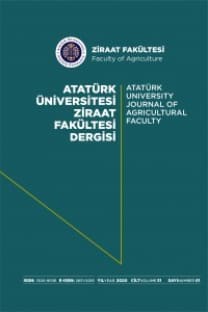Peyzaj Tasarımında Biyoklimatik Konfor ve Yaşam Mekanları İçin Önemi
İnsanların daha konforlu ve yaşanabilir mekanlarda zaman geçirmesi, büyük ölçüde mimarlar ve peyzaj mimarlarının tasarımlarına bağlıdır. Bu nedenle tasarımlarda biyoklimatik konfora gereken önem verilmelidir. Bu çalışmada, iklimin peyzaj tasarımı ve kentsel tasarımdaki etkisi, biyoklimatik konforun tanımı, biyoklimatik konforu etkileyen çevre faktörleri, biyoklimatik konforu hesaplama yöntemleri ve dış mekan tasarımlarındaki etkileri bir arada düşünülerek ortaya konulmaya çalışılmıştır.
Anahtar Kelimeler:
Biyoklimatik konfor, peyzaj tasarımı, iklim elemanları
___
- Blazejczyk, K., 1994. New climatological-and-physiological model of the human heat balance outdoor (MENEX) and its applications in bioclimatological studies in different scales. [in:] Blazejczyk K, Krawczyk B, Bioclimatic research of the human heat balance. Zeszyty IGiPZ PAN, 28 pp. 27-58.
- Bruse, M., 2000. Assessing thermal comfort in urban environments using an integrated dynamic micro-scale bio- meteorological model system. 3rdSymp. on the Urban Environ., Davis, CA, Am. Meteorol. Soc. 159-160.
- Epstein, Y. and Moran, D. S., 2006. Thermal Comfort and the Heat Stress Indices. Industrial Health, 44, 388–398.
- Fanger, P.O., 1970. Thermal comfort, Danish Technical Press, Copenhgen.
- Gagge A, Stolwijk A, Nishi Y., 1971. An effective temperature scale based on a simple model of human physiological regulatory response. ASHRAE Trans 77, 247–57.
- Gagge AP, Fobelets AP, Berglund LG (1986) A Standard predictive index of human response to the thermal environment. ASHRAE Trans 92, 709–31.
- Haldane J.S., 1905. The influence of high air temperature J Hyg 5, 494–513.
- Heisler G. M. and Wang Y. 2002. Applications of a Human Thermal Comfort Model. In preprints of Fourth Symposium on the Urban Environment, 20-24 May 2002, Norfolk, VA, Sponsored by the American Meteorological Society, Boston, MA.
- Houghton FC, Yaglou CP (1923) Determining equal comfort lines. J Am Soc Heat Vent Engrs 29, 165–76.
- Matzarakis A., Mayer H., Iziomon M. G. (1999). Applications of a universal thermal index: physiological equivalent temperature Int J Biometeorol 43:76–84
- Matzarakis, A.; Rutz, F.; Mayer, H., 2000: Estimation and calculation of the mean radiant temperature within urban structures. In: Biometeorology and Urban Climatology at the Turn of the Millenium (ed. by R.J. de Dear, J.D. Kalma, T.R. Oke and A. Auliciems): Selected Papers from the Conference ICB-ICUC'99, Sydney, WCASP-50, WMO/TD No. 1026, 273-278.
- Matzarakis, A., Rutz, F., 2005: Application of RayMan for tourism and climate investigations. Annalen der Meteorologie 41, (2), 631-636.
- Matzarakis, A., Rutz, F., Mayer, H., 2007: Modelling Radiation fluxes in simple and complex environments – Application of the RayMan model. International Journal of Biometeorology 51, 323-334.
- Olgyay, V., 1963. Design with climate: Bioclimatic approach to architectural regionalism. Princeton Univ. Press, Ewing, New Jersey, U.S.A. 236 p.
- Rudel, E., Matzarakis, A. and Koch, E., 2007. Summer Tourism in Austria and Climate Change. In: Oxley, L. and Kulasiri, D. (eds) MODSIM 2007 International Congress on Modelling and Simulation. Modelling and Simulation Society of Australia and New Zealand, December 2007, pp. 1934-1939. ISBN: 978-0-9758400-4-7.
- Soflaee, F. and Shokouhian, M. 2005. Natural cooling systems in sustainable traditional architecture of Iran. International Conference “Passive and Low Energy Cooling for the Built Environment”, May 2005, Santorini, Greece. P. 715-719.
- Thom EC (1959) The discomfort index. Weatherwise 12, 57–60.
- Toudert F. A. 2005. Dependence of Outdoor Thermal Comfort on Street Design in Hot and Dry Climate. (Dissertation). Ber. Meteor. Inst. Univ. Freiburg Nr. 15, 224 p.
- Toy, S., Yilmaz, S. and Yilmaz, H., 2007. Determination of bioclimatic comfort in three different land uses in the city of Erzurum, Turkey. Building and Environment 42 (3), 1315- 1318.
- WMO, 1999: Climate and human health. World climate News 14, 3-5.
- Yaglou CP, Minard D (1957) Control of heat causualties at military training centers. Am Med Ass Arch Ind Hlth 16, 302–16.
- Yaglou CP, Minard D (1957) Control of heat casualties at military training centers. Arch Ind Hlth 16, 302–5.
- ISSN: 1300-9036
- Yayın Aralığı: Yılda 3 Sayı
- Yayıncı: AVES Yayıncılık
Sayıdaki Diğer Makaleler
Recep KOTAN, Kenan KARAGÖZ, Fikrettin ŞAHİN
Arı Sütü Verimine Etki Eden Faktörler
Erzurum Yöresinde Yonca Ekim Alanlarında Bulunan Yabancı Otlar, Yoğunlukları ve Rastlama Sıklıkları
Balıklarda Toksikopatolojik Lezyonlar II / Toxicopathological Lesions in Fish II
Giresun Yöresindeki Süt Sığırcılığı İşletmelerinin Yapısal Özellikleri
Erzurum İli Pasinler İlçesinde Silajlık Mısır Üretim Maliyetinin Tespiti Üzerine Bir Araştırma
İnci Akay Tuvanç, Vedat DAĞDEMİR
İbrahim Ethem Güler, Fatih UYGAN
Besinsel Lif Kaynağı Olarak Enzime Dirençli Nişasta
H. Gürbüz KOTANCILAR, K. Emre GERÇEKASLAN, M. Murat KARAOĞLU, Hüseyin BOZ
Stres Koşullarında ACC Deaminaze Üretici Bakteriler Tarafından Bitki Gelişiminin Teşvik Edilmesi
